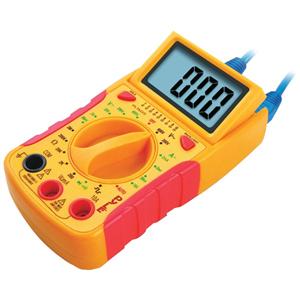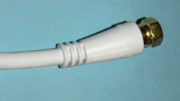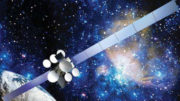Folks, let’s get this out of the way right now. DIRECTV’s AIM meter isn’t cheap. Neither is the meter you use for DISH installs, the AI Turbo S2. But, if you really want to know what’s going on with your satellite signal, you’ll need one of those. I say this a lot, and yet I know there are a lot of handy folks who will want to measure using a multimeter because they have one. Other folks find inexpensive satellite meters online and want to use those instead. Both of those tricks are bad ideas and I’d like to take a moment to explain why.
Why using a multimeter won’t work
For those who are unfamiliar, a multimeter is a tool for measuring the amount of electricity on a line. Generally your typical multimeter will measure volts AC, volts DC, amperage, and the presence of resistance on a line. Fancier ones will measure those things in different degrees, so it’s easier to measure the tinier amounts of current.
However, a multimeter is simply not equipped to measure the extremely tiny amounts of current that make up a satellite signal, and certainly not equipped to measure what makes a good one versus a bad one.
A satellite cable may carry two things. It definitely carries a signal, which is measured in dBm, or in other words, fractions of a milliwatt. A typical satellite signal is something around the range of .00001 milliwatts. That’s far lower than the range even the most sophisticated meter can read.
The other thing that a cable may carry is voltage to power the dish. This is not always the case, because in some cases that voltage is supplied by a multiswitch. When there is voltage, it can vary from 13 to 29 volts depending on how it is supplied. So, simply measuring voltage is an unreliable way to know if the satellite dish is doing what it should.
And then there’s…
And then there’s the problem of how the signal level really doesn’t dictate the quality of the signal at all. As long as the signal level is “sufficient” (which is usually about -50dBm or .000001 milliwatts) then it doesn’t matter how much signal you have. What you need to measure is the signal-to-noise ratio and the bit error rate. These are more complex measurements of the actual digital signal going through the line. A multimeter won’t read any of that.
I also feel like I should talk about inexpensive meters and satellite finders.

You can generally see satellite finders like this one on web sites for well under $50. Solid Signal sells one for practically nothing. And if you have DIRECTV or DISH, you probably shouldn’t get one. This little device will help find satellite signals, as its name implies, but only if they’re in very specific frequency ranges that DIRECTV doesn’t always use. DISH uses them, but again you just get a measure of signal power which doesn’t really equate to what you’re going to see on screen. Without the ability to identify the actual satellite you’re pointing at, you might hone in on the wrong one and not know it.
The inexpensive meters you will see on overseas shopping sites suffer from the same problem. Although they are a little better than the satellite finder, they’re still not going to help. They won’t help you at all in most cases with DIRECTV or DISH and that’s because they don’t have the ability to decode the signals that these satellites are sending.
If those aren’t good options, what are your options then?
Really with US satellite service it boils down to two things. Both DIRECTV and DISH receivers let you look at signal strength using a satellite receiver, but it can take more than 10 seconds for signal levels to change. That can slow down the process quite a bit. But, if you only aim your dish every now and again, it’s not too bad. The other option is to simply bite the bullet and buy the meter you need. If you’re aiming a dish every weekend during tailgate season, you’ll appreciate it for sure!
If you have any questions about your DIRECTV or DISH service, call the experts at 888-233-7563. If it’s after hours, fill our the form below. We’ll get right back to you!





